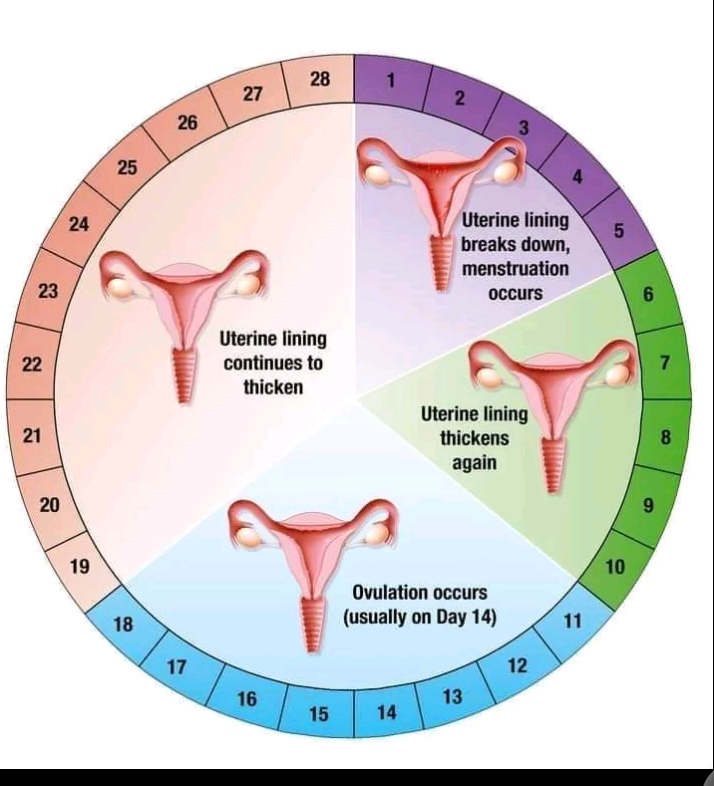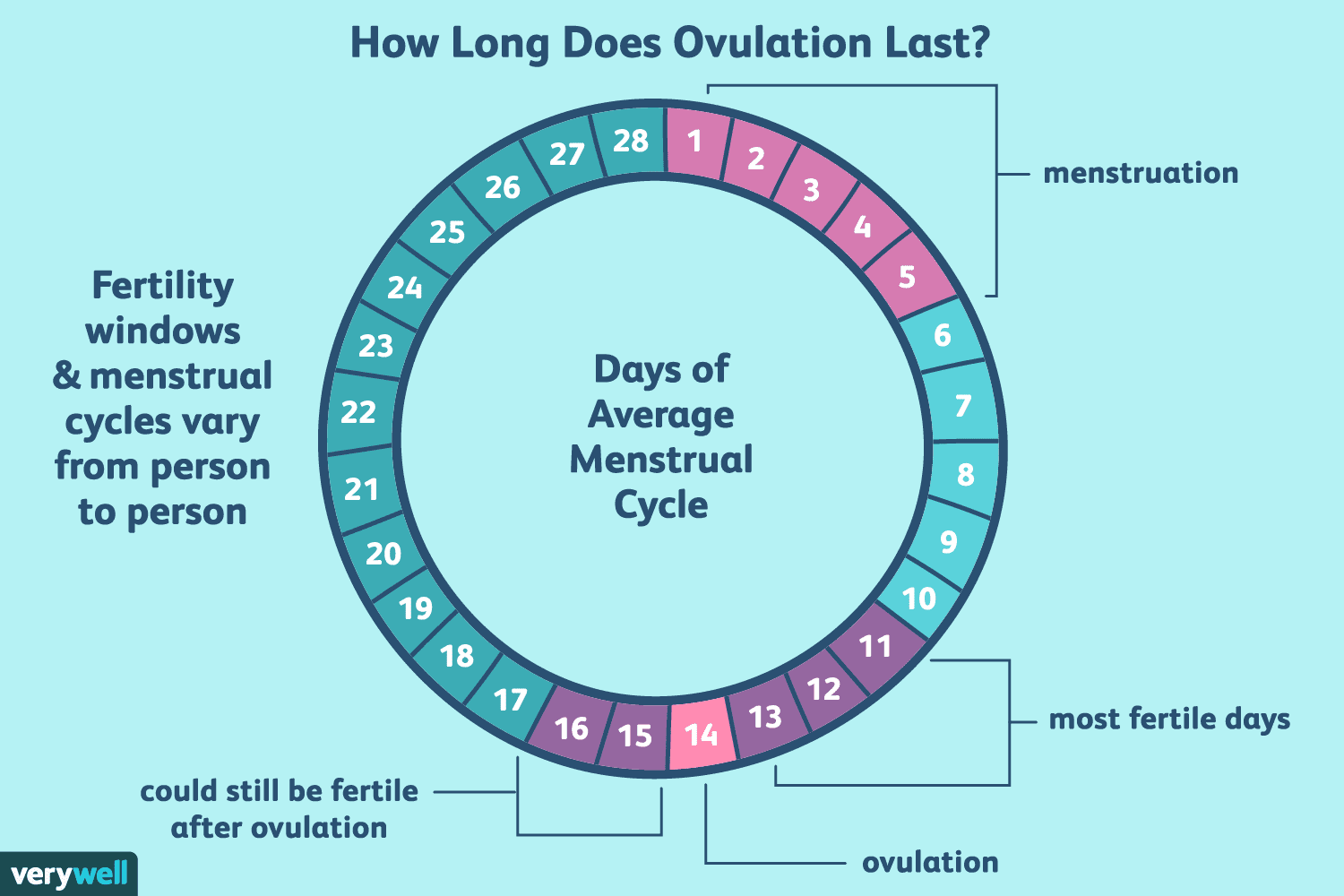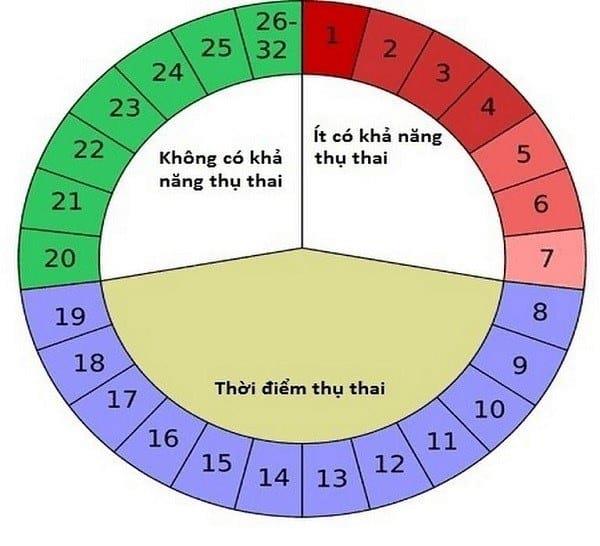Got It So When Can You Have Unprotected Sex
Erm NEVER?!
Just kidding . In general, your period is the part of your cycle when youre least likely to make a baby. But regardless of timing, its impossible to be 100 percent sure that unprotected sex wont result in pregnancy.
If you have a 28-day cycle that runs like clockwork, your fertile window lasts for about 6 days mid-cycle . Your safest bet for unprotected sex is a week or so after ovulation just before, during, or just after your period.
But and were sounding like a broken record you could still get pregnant if you have an unpredictable cycle, if you have short cycles, or if you have sex within 5 days of your fertile window .
Signs Of Ovulation To Look Out For
Here are the seven main ovulation symptoms lookout for:
- Your basal body temperature falls slightly, then rises again.
- Your cervical mucus becomes clearer and thinner with a more slippery consistency similar to that of egg whites.
- Your cervix softens and opens up.
- You may feel a slight twinge of pain or mild cramps in your lower abdomen.
- Your sex drive may increase.
- You may notice some light spotting.
- Your vulva or vagina may appear swollen.
Fertility Awareness And Family Planning
Some women use fertility awareness as a method of natural birth control. One of the tools used is something called the Standard Days method. This establishes that if you have a period that is between 26 to 32 days long, days eight through 19 will be your most fertile days. However, this method is most effective when you have regular menstrual cycles.
If a woman has a regular period and uses the method perfectly, less than one to five women out of 100 will become pregnant. However, the key words here are perfect use. The typical use rate is different. Typical use means that the methods may be done incorrectly or measured inconsistently. In the first year of this typical use, 12 to 24 women out of 100 will become pregnant.
You May Like: Do You Have A Period With Mirena
Changes In Basal Body Temperature
Basal body temperature is the temperature of the body at rest. For the most accurate reading, a person should take it as soon as they wake up.
During ovulation, this temperature may slightly increase as the body secretes progesterone, a hormone that helps thicken the uterine lining in preparation for the implantation of an embryo.
Before ovulation, a persons oral temperature is around 9698ºF . This may rise to 9799°F after ovulation. Because the increase is so slight, around 0.4 to 0.8°F, a person needs a special tool, a basal body thermometer, to detect it.
People are at their most fertile 23 days before their BBT is at its highest point and 1224 hours after ovulation.
Because BBT only rises after ovulation, people may prefer other ways of checking their fertility, such as tests that measure levels of luteinizing hormone in urine.
Also, it is important to note that other factors can raise a persons BBT, including:
- consuming alcohol
- having a fever
What This Study Adds

The timing of the fertile window is highly variable, even among women who regard their menstrual cycles as regular
More than 70% of women are in their fertile window before day 10 or after day 17 of their menstrual cycle
There are few days of the menstrual cycle during which some women are not potentially fertile
Regarding the second assumption, the evidence for fertile days after ovulation comes from studies using crude measures of ovulation . With more precise measures, the fertile window does not seem to extend beyond the day of ovulation.1,2 It follows that women reach their fertile days earlier in the cycle than suggested by current guidelines. For example, women with regular 28 day cycles are most likely to be potentially fertile on days 8-15 of their menstrual cycle .
Also Check: What Is A Woman’s Period
Why Six Days + One
Sperm can live inside your body for up to five days.
Lets say that you ovulate on day 12 of your cycle. If you have sex on days seven, eight, nine, 10, or 11, there could still be sperm living inside you on those days.
When your egg is released on day 12, there could be sperm available to fertilize it.
If you have sex the day after you ovulate, you may also become pregnant. After you ovulate, an egg survives for about 24 hours.
If you happen to ovulate in the afternoon or evening on day 12, then the egg could be fertilized in the 24-hour period after.
This is why its best to avoid having unprotected sex the entire day after you ovulate.
Basal Body Temperature Method
Also called the temperature method, you take your temperature each morning as soon as you wake up . You use a basal body thermometer, which may go in your mouth or your rectum. A basal thermometer is more sensitive than a regular thermometer. It measures body temperature to a tenth of a degree.
A womans basal body temperature rises slightly during ovulation . If you track your temperatures leading up to ovulation, you should see a sustained rise in your basal body temperature after ovulation.
To help you plan, write your body temperature down each day on a tracking sheet. You should track your temperature for at least three months before using this method for family planning.
However, its important to note that the basal body temperature method is not good at predicting your ovulation when trying to conceive. Once you identify the rise in your temperature, youve already ovulated. However, this method is a good tool to monitor your pattern of ovulation.
Recommended Reading: Period 12 Days Late Negative Pregnancy Test
It’s Possible To Get Pregnant At Any Time Of The Month
To get pregnant, you need to have sex on the days leading up to and around when you ovulate. The day prior to ovulation, and the day of ovulation itself, being your . Once the egg has gone you cannot get pregnant until after your next has started. Methods that tell you after you have ovulated are of no help if you are
How Long Does Your Fertile Window Last
Strictly speaking, conception only occurs within 24 hours of ovulation. However, its possible for your body to release eggs from both ovaries in a single cycle, as much as 24 hours apart. Therefore, your ovulation window can last up to 72 hours.
Keep in mind that your fertile window is much longer. It begins four or five days before ovulation. However, because ovulation can shift, its important to remember that youre potentially fertile on any day that you observe cervical fluid, or a clear to whitish discharge. Sometimes its sticky or lotiony. If youre about to begin ovulating, its wet and slippery like egg whites. Sperm have the highest chances for survival in wet, slippery cervical fluid.
Recommended Reading: Ovulation Calculator Last 3 Months Period
I Had Sex 3 Days After My Period Can I Get Pregnant
Yes, a woman can get pregnant if she has unprotected sex 3 days after her period. However, it is very rare for a woman to get pregnant right after the period. It is possible as sperm can live in a woman’s reproductive tract for 7 days. The ovulation period can start for women with shorter menstrual cycles.
What Is The Fertile Window
Your fertile window is the time during your cycle when your chances of conceiving are at their highest.
When is the fertile window?
Your fertile window occurs midway through your cycle.
The length of your menstrual cycle helps determine the length and timing of your fertile window. Your period marks the first day of your cycle the average cycle length is 28 days, but it can range from 21 to 35 days. So, depending on your cycle, your fertile window can be anywhere from six to 10 days in length.
Read Also: How To Make My Period Come Faster
Buy An Ovulation Predictor Kit
Don’t want to mess around with mucus? You don’t have to. Many women use ovulation predictor kits, which identify the date of ovulation 12 to 24 hours in advance by looking at levels of luteinizing hormone, or LH, the last of the hormones to hit its peak before ovulation. All you have to do is pee on a stick and wait for the indicator to tell you whether you’re about to ovulate. These approaches are more accurate than the use of apps which predict when you should be ovulating, but not necessarily when you are ovulating.
A less precise and rarely used approach is a saliva test, which measures estrogen levels in your saliva as ovulation nears. When you’re ovulating, a look at your saliva under the test’s eyepiece will reveal a microscopic pattern that resembles the leaves of a fern plant or frost on a window pane. Not all women get a good “fern,” but this test, which is reusable, can be cheaper than the kits.
There are also devices that detect the numerous salts in a woman’s sweat, which change during different times of the month. Called the chloride ion surge, this shift happens even before the estrogen and the LH surge, so these tests give a woman a four-day warning of when she may be ovulating, versus the 12-to-24-hour notice that standard ovulation predictors provide. The saliva and chloride ion surge tests have not been well studied and tend to be used much less frequently.
When Am I Most Fertile

The most fertile time in your cycle are the days leading up to ovulation, before the egg is released from the ovary. After ovulation the egg survives for just 24 hours, while sperm retain fertilising capability for two to three days in the fallopian tubes. For this reason, we recommend that couples have sexual intercourse every two days throughout the females Fertile Window. This means that sperm are ready and waiting for the egg when the female ovulates. If you wait until after the female has ovulated before you have sex, you will most likely have missed the opportunity for conception that month.
Recommended Reading: How To Get Periods Immediately In Pcos
How Soon After An Abortion Can You Get Pregnant
Ovulation can occur as soon as 2 weeks after an abortion. This means a person may become pregnant again before their next period. However, menstrual cycles vary in length, and people with shorter cycles may ovulate sooner.
Another factor that influences the timing of ovulation is the duration of the pregnancy before the abortion. If an abortion takes place later in the pregnancy, the person may not ovulate for several weeks afterward. This can occur when pregnancy hormones linger in the body.
A person who wants to avoid pregnancy soon after an abortion may want to use contraception. According to the ACOG, a person can use any contraceptive method, including an intrauterine device, immediately after pregnancy ends.
Anyone who wonders whether they have become pregnant soon after an abortion should take a pregnancy test. If the result is positive, they should see a doctor, who can determine whether there is a new pregnancy or whether leftover pregnancy hormones are present.
People can become pregnant within 2 weeks of an abortion. For those who are ready to get pregnant again, there is generally no medical reason to delay trying to conceive unless a doctor advises otherwise.
A person does not need to take extra steps to become pregnant after an abortion.
However, some doctors recommend waiting until the first menstrual period has ended. This will make it easier to estimate the delivery date of the next pregnancy.
How To Tell When You’re Ovulating
Since it’s such a small window, pinning down when you start to ovulate can be tricky. Here are some tips:
- Track your cycle: To start, try tracking your cycle. Ovulation takes place around 14 days before your period begins. Count back from when your period is expected to arrive to find out when you should ovulate. If you have a 29-day cycle, you’ll ovulate around day 15, but if you have a longer cycle of 35 days, you’ll ovulate around day 21, says Minkin.
- Monitor your cervical fluid: When the texture is creamy and the color is white, that indicates that you’re approaching ovulation, and when the fluid becomes slippery, stretchy, and clear, it’s a sign that you may be ovulating.
- Take your temperature: Another strategy is to take your basal body temperature, which is your body temperature at rest. Measure it in the morning, when you’re still in bed, before eating or doing any activity. During ovulation, your temperature will rise slightly, by about 0.5 to 1 degrees Fahrenheit.
- Ovulation predictor kit: The most accurate way to predict ovulation is with an ovulation predictor kit, says Minkin. These urine tests are available over-the-counter at drugstores and detect the presence of hormones that indicate ovulation. Minkin recommends the First Response ovulation test for its accuracy and ease of use.
You May Like: Signs Of Pregnancy Before Missed Period
Managing Fertility After Your Period
You don’t want to worry about getting pregnant before you’re ready. That’s why it’s essential to know your cycle and your body and use protection whenever there’s a chance you could get pregnant.
If you had unprotected PIV sex during your period and are concerned that you may be expecting, look out for early pregnancy symptoms like mild lower abdominal cramping, breast tenderness, and moodiness. Other common pregnancy symptoms will manifest closer to six or seven weeks of gestation, including nausea, vomiting, and fatigue.
Factors That Affect Ovulation
Timing your ovulation can be tricky because it may not happen on the same day or same time every month. The length of your cycle may also change from month to month.
Even carefully tracking the numbers may not always help you predict ovulation. You may ovulate earlier or later than you predicted.
A change in the day of ovulation can have a number of causes, including:
- Illness
Recommended Reading: How To Tell When Your Period Is Over
Can You Get Pregnant Outside Of Your Fertile Window
Although conception only happens in the first 12 to 24 hours after ovulation, its definitely possible to get pregnant from sex outside of your predicted fertile window. Again, this is because sperm can survive inside the uterus for several days.
Although conception only happens in the first 12 to 24 hours after ovulation, its definitely possible to get pregnant from sex outside of your predicted fertile window.
Occasionally, ovulation may occur at a different point in your cycle. Stress, anxiety, travel, and changes to your normal routine all affect the delicate hormonal balance that triggers ovulation. For example, you might usually ovulate around day 20 but experience 1 or 2 cycles per year where ovulation occurs much earlier or later.
Your Period Lasts A Long Time
It’s not uncommon to have spotting in the day or so before your period starts and for a few days after that. Because of this bleeding, you might falsely believe you’re still on your period and can’t get pregnant. In reality, though, ovulation can be closer than you think.
You May Like: What Age Will I Get My Period
Track Your Basal Body Temperature
Your basal body temperature, or BBT, that is. Taken with a special, basal body thermometer, basal body temperature is the baseline reading you get first thing in the morning, after at least three to five hours of sleep and before you get out of bed, talk or even sit up. Your BBT changes throughout your cycle as fluctuations in hormone levels occur. During the first half of your cycle before ovulation, estrogen dominates.
During the second half after ovulation, there’s a surge in progesterone, which increases your body temperature as it gets your uterus ready for a fertilized, implantable egg. That means your temperature will be lower in the first half of the month than it is in the second half.
Confused? Here’s the bottom line: Your basal body temperature will reach its lowest point at ovulation and then rise immediately about a half a degree as soon as ovulation occurs. Keep in mind that charting your BBT for just one month will not enable you to predict the day you ovulate but rather give you evidence of ovulation after it’s happened. Tracking it over a few months, however, will help you see a pattern in your cycles, enabling you to predict when your fertile days are and when to hop into bed accordingly.
Many women do find this approach a bit frustrating and it is important to know that studies have shown that the timing of ovulation does vary among women after the dip in temperature. Ovulation predictor kits are more precise.
How Many Fertile Days Are In A Cycle

Its only possible to get pregnant in the first 24 hours after ovulation, but your fertile window the ideal time to have sex is much longer.
Youre actually capable of ovulating once from each ovary , so your ovulation window lasts roughly 72 hours. It should be noted that ovulating from both ovaries isnt especially common.
After intercourse, sperm can live in the body for up to five days. This means that having sex as early as four days before ovulation could still result in a pregnancy.
Furthermore, any day you spot cervical fluid is potentially a fertile day. The bottom line? Although conception can only occur on a maximum of three days per cycle, your fertile window, when sex may result in pregnancy, may last up to eight days.
Read Also: Can A Girl Swim On Her Period
